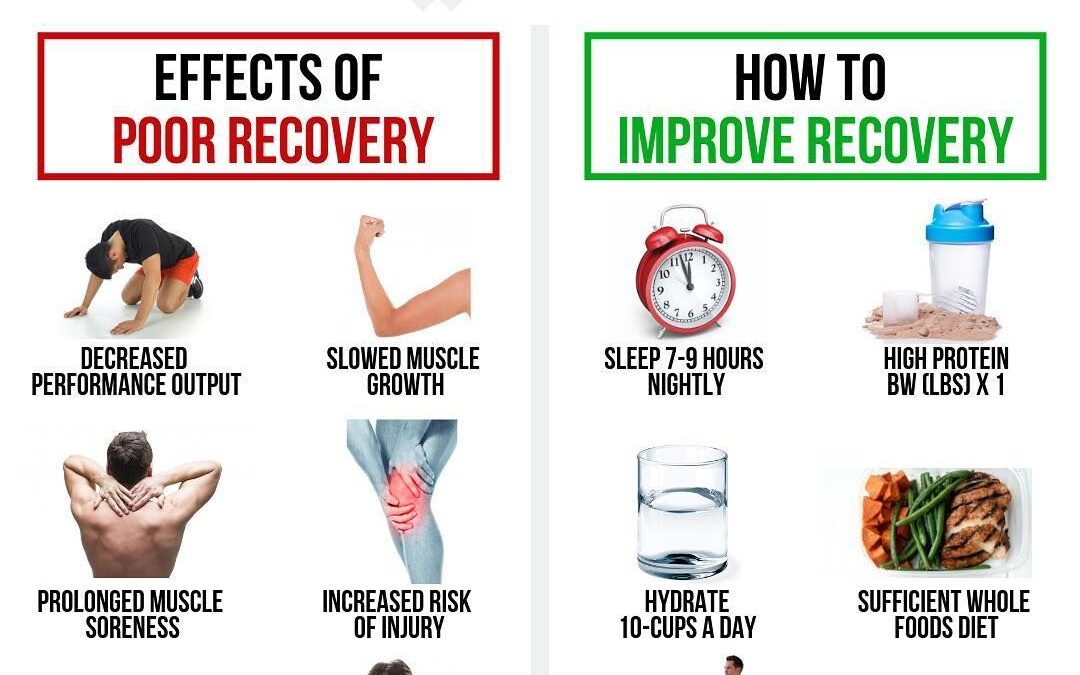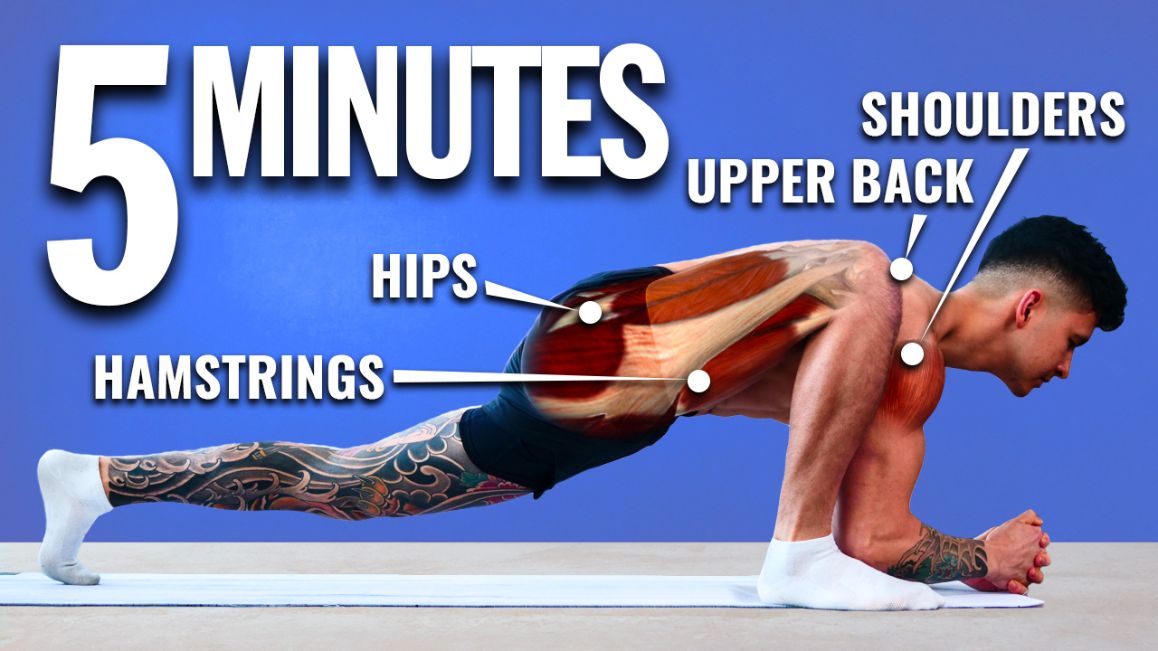
Daily Tips For Muscle Recovery: Unlock Your Body’s Potential
Daily Tips for Muscle Recovery: Unlock Your Body’s Potential
Related Articles
- Finding The Right Workout For Your Personality: Unlock Your Fitness Potential
- Unlock Your Inner Athlete: A Comprehensive Guide To Enjoying Physical Activity
- Beginner’s Guide To Bodyweight Workouts: Unlock Your Potential
- “Revolutionize Your Fitness: The Power of Core Workouts”
- The Ultimate Guide To Hydration: Tips, Tricks, And Secrets For A Healthier You
Introduction
Uncover insights to start or boost your journey with Daily Tips for Muscle Recovery: Unlock Your Body’s Potential.
Daily Tips for Muscle Recovery: Unlock Your Body’s Potential

The pursuit of fitness is a journey of pushing limits and achieving new milestones. However, the true magic happens during the recovery phase. This is where your muscles rebuild, stronger than before. While exercise builds muscle, it’s the recovery process that truly unlocks your body’s potential.
This comprehensive guide will delve into the big secret tips and tricks for optimizing your daily muscle recovery. We’ll explore a wide range of strategies, from the fundamentals of rest and nutrition to advanced techniques like compression and cryotherapy.
Get ready to discover the secrets to faster, more effective muscle recovery, and experience a whole new level of fitness performance.
The Science Behind Muscle Recovery
Before we dive into the tips and tricks, let’s understand the science behind muscle recovery. When you exercise, your muscles experience microscopic tears. This damage triggers an inflammatory response, leading to soreness and stiffness. However, it’s during this repair process that your muscles become stronger and more resilient.
Here’s a breakdown of the key processes involved:
- Inflammation: The initial phase of recovery involves inflammation, a natural response to muscle damage. White blood cells rush to the site of injury, cleaning up debris and preparing the area for repair.
- Repair and Growth: Muscle proteins are broken down and rebuilt, leading to muscle growth and adaptation. This process requires adequate protein intake and rest.
- Adaptation: As your muscles heal, they become stronger and more resistant to future stress. This adaptation is the foundation of progress in your fitness journey.

Review
The Essential Pillars of Muscle Recovery: A Foundation for Success
1. Rest and Sleep:
Rest is the cornerstone of muscle recovery. Your body needs time to repair and rebuild muscle tissue. Aim for 7-9 hours of quality sleep each night.
Tips and Tricks:
- Establish a consistent sleep schedule: Go to bed and wake up around the same time each day, even on weekends.
- Create a relaxing bedtime routine: Take a warm bath, read a book, or listen to calming music.
- Optimize your sleep environment: Make sure your bedroom is dark, quiet, and cool.
Step-by-Step Guide
2. Nutrition:
Proper nutrition fuels muscle recovery and growth. Focus on consuming adequate protein, carbohydrates, and healthy fats.
Tips and Tricks:
- Prioritize protein intake: Aim for 0.8-1.2 grams of protein per pound of body weight daily.
- Choose complex carbohydrates: Opt for whole grains, fruits, and vegetables for sustained energy.
- Hydrate effectively: Drink plenty of water throughout the day to support muscle function and recovery.
- Supplement wisely: Consider adding a high-quality protein powder or creatine to your diet.
Tips to Maximize Your Fitness Journey
3. Active Recovery:
Active recovery doesn’t mean hitting the gym hard again. It involves gentle movement that promotes blood flow and reduces muscle stiffness.
Tips and Tricks:
- Go for a walk or light jog: Low-intensity cardio helps flush out metabolic byproducts and improve circulation.
- Try yoga or Pilates: These practices improve flexibility, range of motion, and muscle recovery.
- Engage in foam rolling: This self-massage technique helps release muscle tension and improve mobility.
Advanced Techniques for Accelerated Recovery
1. Compression Therapy:
Compression garments or sleeves can help reduce swelling and improve blood flow, promoting faster recovery.
Tips and Tricks:
- Wear compression garments during and after workouts: Choose garments that provide moderate compression without restricting movement.
- Consider compression socks for leg workouts: They can help reduce soreness and fatigue.
- Use compression sleeves for arms or specific muscle groups: Target areas that experience the most soreness.
2. Cold Therapy:
Applying cold to injured areas can reduce inflammation and pain, promoting faster recovery.
Tips and Tricks:
- Use ice packs or cold water immersion: Apply ice packs for 15-20 minutes at a time, or immerse the affected area in cold water for 5-10 minutes.
- Consider cryotherapy: This involves exposure to extremely cold temperatures for a short period, which can reduce inflammation and pain.
- Be cautious with cold therapy: Consult with a healthcare professional before using cold therapy if you have any underlying health conditions.
3. Massage Therapy:
Massage can help release muscle tension, improve blood flow, and reduce soreness.
Tips and Tricks:
- Seek out a qualified massage therapist: Choose a therapist who specializes in sports massage or deep tissue massage.
- Schedule regular massage sessions: Aim for at least one massage per week, or more frequently if needed.
- Consider self-massage techniques: Use foam rolling or massage balls to target specific muscle groups.
4. Electrolyte Replenishment:
Electrolytes are essential for muscle function and recovery. Replenishing lost electrolytes can help prevent muscle cramps and fatigue.
Tips and Tricks:
- Drink electrolyte-rich beverages: Sports drinks or electrolyte tablets can help replace lost electrolytes.
- Eat electrolyte-rich foods: Bananas, avocados, and leafy greens are good sources of electrolytes.
- Monitor your electrolyte intake: Pay attention to your body’s signals and adjust your electrolyte intake as needed.
The Progression of Tips and Tricks: From Beginner to Advanced
Beginner Level:
- Prioritize rest and sleep: Aim for 7-9 hours of quality sleep each night.
- Hydrate effectively: Drink plenty of water throughout the day.
- Engage in active recovery: Go for a walk or light jog.
Intermediate Level:
- Prioritize protein intake: Aim for 0.8-1.2 grams of protein per pound of body weight daily.
- Use compression garments: Wear compression sleeves or socks during and after workouts.
- Try foam rolling: Use a foam roller to release muscle tension and improve mobility.
Advanced Level:
- Consider cryotherapy: Explore the benefits of cold therapy for accelerated recovery.
- Schedule regular massage sessions: Seek out a qualified massage therapist for deep tissue or sports massage.
- Supplement wisely: Consider adding a high-quality protein powder or creatine to your diet.
Conclusion: Empowering Your Fitness Journey Through Recovery
Mastering muscle recovery is not just about alleviating soreness; it’s about unlocking your body’s full potential. By incorporating these daily tips and tricks into your routine, you’ll experience faster recovery, reduced muscle fatigue, and enhanced performance. Remember, the journey to fitness is a marathon, not a sprint. Embrace the power of recovery, and you’ll be well on your way to achieving your fitness goals.
Frequently Asked Questions (FAQs):
Q: How long should I rest after a workout?
A: The ideal rest time depends on the intensity and duration of your workout. Generally, aim for at least 24 hours of rest between intense workouts for the same muscle group.
Q: What are the best foods for muscle recovery?
A: Focus on lean protein sources like chicken, fish, and beans. Include complex carbohydrates like whole grains, fruits, and vegetables. Don’t forget healthy fats like avocados, nuts, and seeds.
Q: Is it necessary to take supplements for muscle recovery?
A: While supplements can be helpful, they are not essential. Prioritizing a balanced diet is crucial for muscle recovery. Consider supplements like protein powder or creatine if you have difficulty meeting your nutritional needs through food alone.
Q: How often should I get a massage for muscle recovery?
A: Aim for at least one massage per week, or more frequently if needed. Massage can be particularly beneficial after intense workouts or if you experience chronic muscle tension.
Q: Can I use cold therapy on any injured area?
A: Consult with a healthcare professional before using cold therapy on any injured area, especially if you have any underlying health conditions.
Q: What are the benefits of compression therapy?
A: Compression therapy can help reduce swelling, improve blood flow, and promote faster recovery by supporting muscle tissue and reducing inflammation.
Q: How can I make sure I’m getting enough sleep for muscle recovery?
A: Establish a consistent sleep schedule, create a relaxing bedtime routine, and optimize your sleep environment. Avoid caffeine and alcohol before bed, and ensure your bedroom is dark, quiet, and cool.
Q: What are some other tips for improving muscle recovery?
A: Stay hydrated, listen to your body, avoid overtraining, manage stress levels, and seek professional guidance if needed.
Remember, consistency is key! By incorporating these daily tips and tricks into your routine, you’ll unlock a whole new level of fitness performance and experience the true power of muscle recovery.
Source URL:
https://www.ncbi.nlm.nih.gov/pmc/articles/PMC6739444/
Closure
We hope this article has provided valuable insights into Daily Tips for Muscle Recovery: Unlock Your Body’s Potential. Stay with us for more tips on fitness and wellness!
Stay tuned for more expert tips to elevate your fitness journey!
Don’t miss out on future content to help you reach your fitness goals—follow us for the latest updates.



